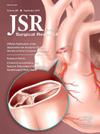与水上活动相关的脊柱损伤的医院预后
IF 1.7
3区 医学
Q2 SURGERY
引用次数: 0
摘要
在包括游泳、冲浪或与高能破浪接触在内的水上活动中发生的脊柱损伤(si)引起了重大的公共卫生问题。本研究分析了在水上活动期间持续SIs的住院结果,评估了死亡率、并发症、住院时间(LOS)和创伤干预等因素。方法:采用美国外科医师学会创伤质量改善项目注册表(2017-2022)的数据进行回顾性队列研究。患者包括与水生活动有关的持续性si,这些si是根据《国际疾病分类》第十版溺水相关机制代码确定的。与交通有关的溺水被定义为涉及船只或个人船只的溺水。符合条件的病例有记录的SIs,主要结局包括院内死亡率、院内并发症、LOS和需要手术干预。结果960例患者中,87%因交通相关溺水受伤,10%因非交通相关意外溺水受伤,3%因故意或不明原因溺水受伤。骨折是最常见的损伤类型(85%)。非交通相关溺水和故意溺水与较高的院内死亡率(优势比分别为6.74和8.50)和延长的LOS(发生率比分别为1.19和1.47)相关。故意溺水的院内并发症发生率较高(优势比:3.46)。饮酒与故意溺水有关,而使用保护装置与降低伤害严重程度和缩短LOS相关。结论:优化骨折管理,及时转移到专门的SI中心,促进保护装置的使用可以改善患者的预后。公共卫生倡议不鼓励饮酒和加强水上安全教育可以降低伤害的严重程度。未来的研究应关注游泳能力、干预时间和防护装置的有效性。本文章由计算机程序翻译,如有差异,请以英文原文为准。
Hospital Outcomes of Spinal Injuries Associated With Aquatic Activities
Introduction
Spinal injuries (SIs) that occur during aquatic activities, including swimming, surfing, or engaging with high-energy breaking waves, pose a significant public health concern. This study analyzed hospital outcomes for SIs sustained during aquatic activities, evaluating factors such as mortality, complications, length of stay (LOS), and trauma intervention.
Methods
We conducted a retrospective cohort study using data from the American College of Surgeons Trauma Quality Improvement Program registry (2017-2022). Patients included sustained SIs related to aquatic activities, identified using International Classification of Diseases, Tenth Revision codes for drowning-related mechanisms. Transport-related drownings were defined as those involving watercraft or personal watercraft. Eligible cases had documented SIs, and primary outcomes included in-hospital mortality, hospital complications, LOS, and need for surgical intervention.
Results
In addition, 960 patients were analyzed: 87% sustained injuries from transport-related drownings, 10% from nontransport-related unintentional drownings, and 3% from intentional or undetermined drownings. Fractures were the most common injury type (85%). Nontransport-related and intentional drownings were associated with higher odds of in-hospital mortality (odds ratio: 6.74, 8.50, respectively) and prolonged LOS (incidence rate ratio: 1.19, 1.47, respectively). Intentional drownings had higher odds of in-hospital complications (odds ratio: 3.46). Alcohol consumption was linked to intentional drownings, while protective device use correlated with reduced injury severity and shorter LOS.
Conclusions
Optimizing fracture management, timely transfers to specialized SI centers, and promoting protective device use may improve patient outcomes. Public health initiatives discouraging alcohol consumption and enhancing aquatic safety education could reduce injury severity. Future research should address swimming ability, time to intervention, and protective device effectiveness.
求助全文
通过发布文献求助,成功后即可免费获取论文全文。
去求助
来源期刊
CiteScore
3.90
自引率
4.50%
发文量
627
审稿时长
138 days
期刊介绍:
The Journal of Surgical Research: Clinical and Laboratory Investigation publishes original articles concerned with clinical and laboratory investigations relevant to surgical practice and teaching. The journal emphasizes reports of clinical investigations or fundamental research bearing directly on surgical management that will be of general interest to a broad range of surgeons and surgical researchers. The articles presented need not have been the products of surgeons or of surgical laboratories.
The Journal of Surgical Research also features review articles and special articles relating to educational, research, or social issues of interest to the academic surgical community.

 求助内容:
求助内容: 应助结果提醒方式:
应助结果提醒方式:


